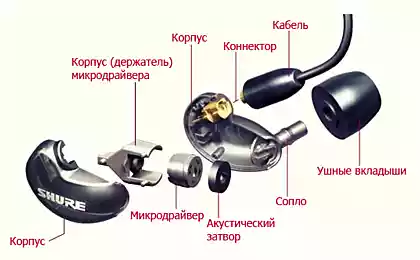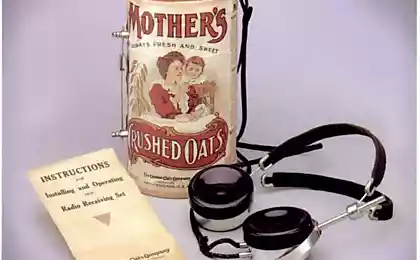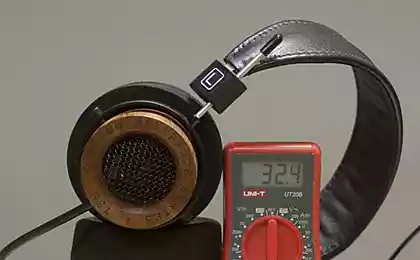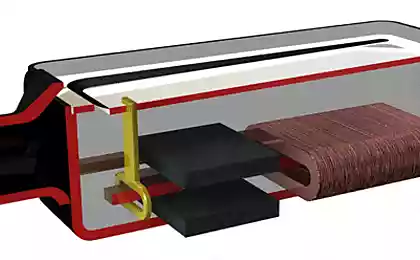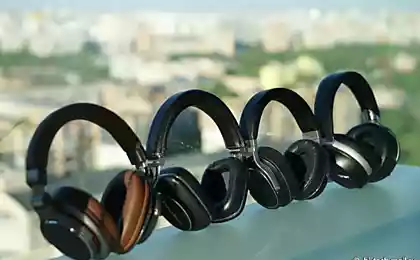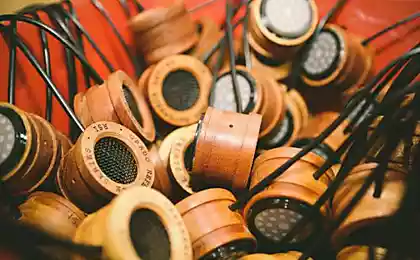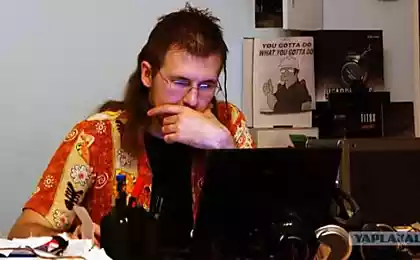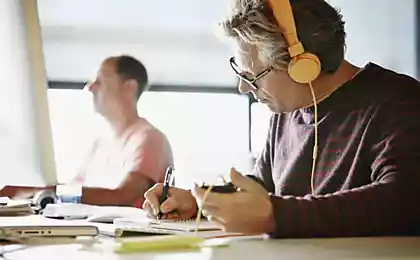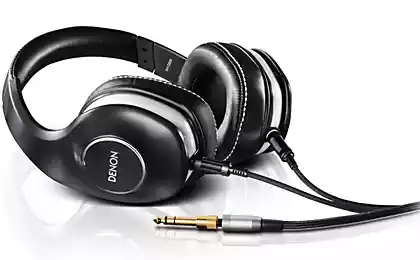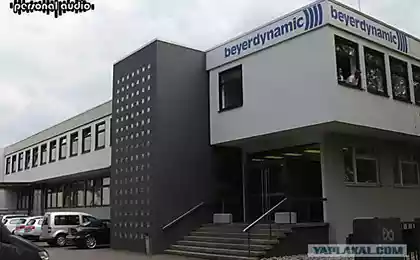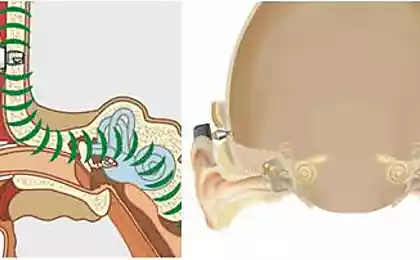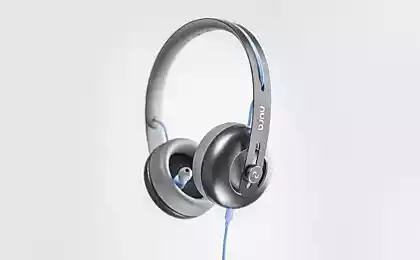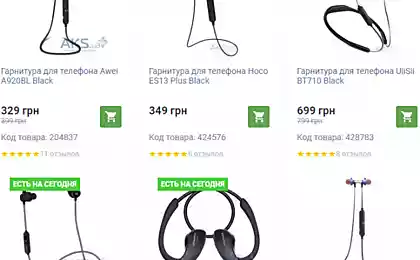501
Headphones 1920s and their transformation
From Habr
The story of how the device with ninety found application in the history of two thousand twelfth year.
It all started with an inexpensive audio. Around two years ago, I wanted to try the small overhead headphones, purely out of curiosity, how it will sit on his head. I think that's like that.

The sound of them was pretty clean, just frustrating lack bass. Unsuccessful design appeared in a couple of weeks in a bag thin plastic bow broke in half. Repair tape proved unreliable, so a box with all the junk went emitters, and the rest went to travel to the landfill.
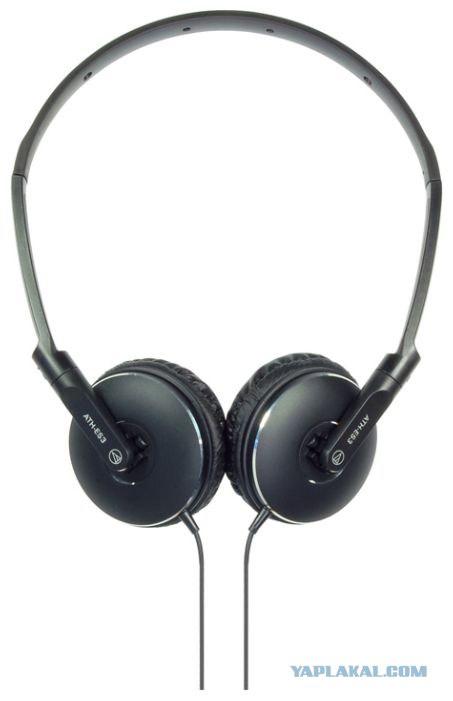
And about a month ago, after months of exploring the ebeyu, losing in one auction and win in the other, in the direction of Moscow headed by Royal Mail box with the contents of «VINTAGE SG BROWN TYPE F 2000ohms 1920's HEADPHONES HEAD PHONES CRYSTAL RADIO»
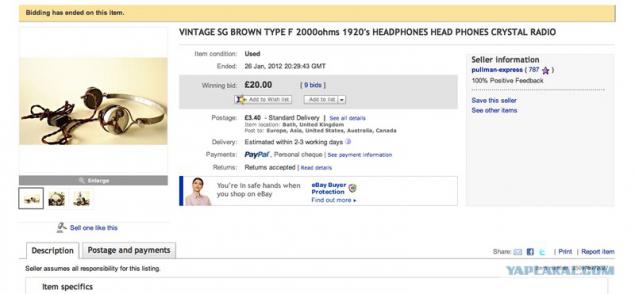
On Friday, a box arrived in Moscow.
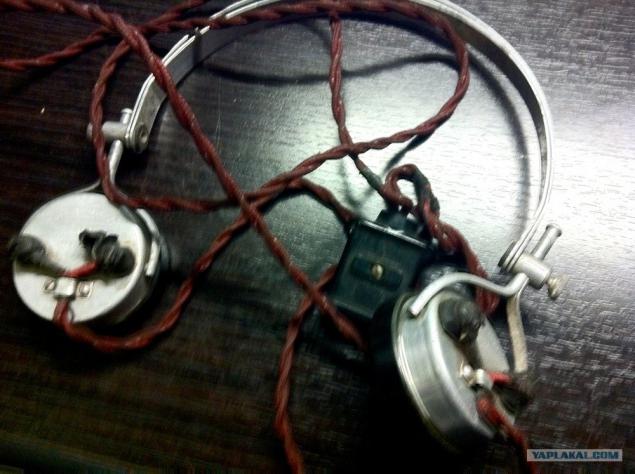
«S.G.Brown
Type F
Patent 203121
2000 »
It is this inscription met me at the emitters.
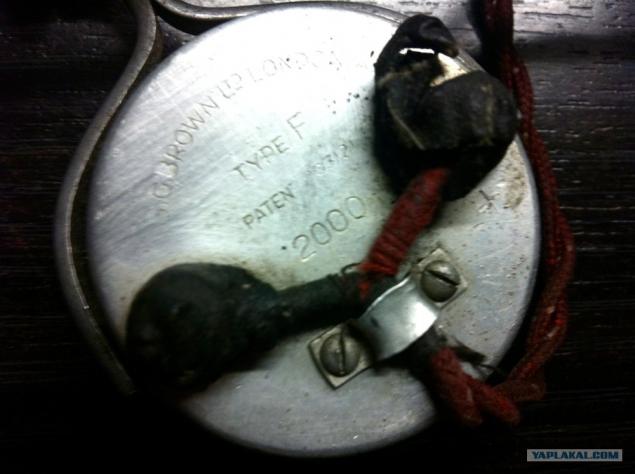
This patent was issued in 1923 and describes the shape of the magnet used in the radiator. Headphones, according to the Internet were quite popular and similar models produced up to 60s.
But it turned out to be on hand model released in the first years after the grant of the patent. Then change the design.
Headphones, which is logical for your time and have a mono jack British radio sets of the century. The plug is also made in England, UK.
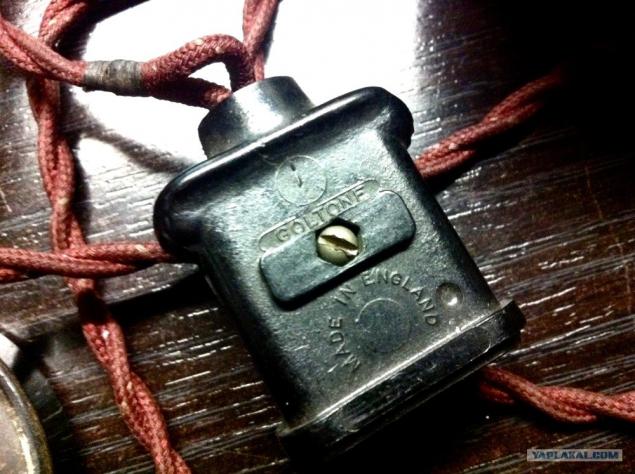
Cable - one of the most delightful that just had to meet. He really cloth, inside a thin copper wire braided around the yarn. For jack and headphone wire is fixed mechanically, without any soldering.
SGBrown Type F 1920s headphones (Headphones 1920 SGBrown Type F)
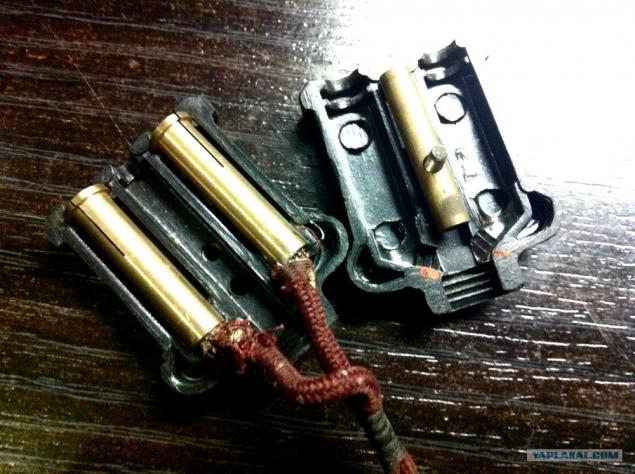
The first step was the restoration and modification analysis and cleaning. Throughout its history, the headphones had time to acquire a layer of dirt and scratches.
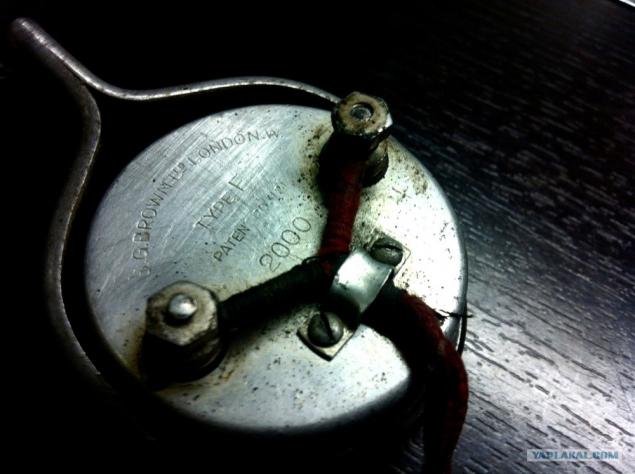
Internal structure of the unit incredibly easy. On it is possible to explain the principle of operation of audio equipment.
The metal diaphragm.
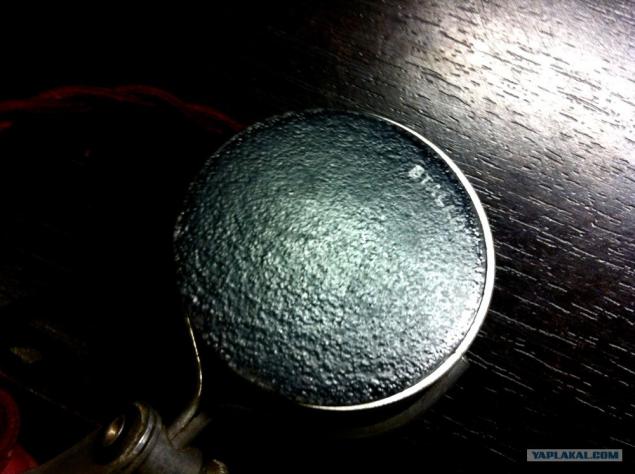
And magnets. Everything is available, one has only to unscrew the cap.

Before removing the stuffing, it was decided to still check it. The sound is what it should be coming out of each radiator. I would not say about a lot of its quality, but the noise was just rattling aperture in one of the ears, the rest of the sound is good. Nominal impedance of the ear - 2K Ohm, which may be good for the British radio sets, but almost beyond the power of modern players without an amplifier. A booster for me, alas, only one car, and it is powered from the old computer power supply. Such a construction is problematic to carry.
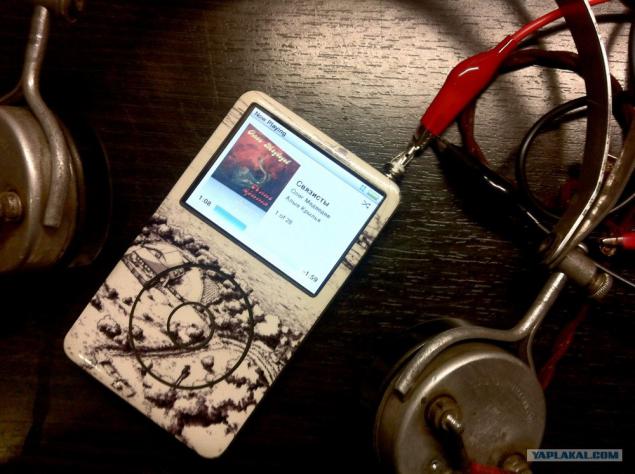
Everything is not fixed inside the headphones, except on the bolts, which are also holders for terminal wires suitable outside. At any time, any part of the structure can be repaired or replaced.
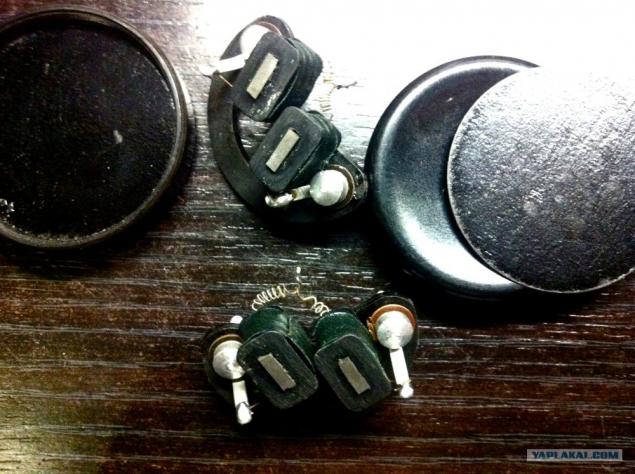
Turn Vintage cloth wire mono to stereo without cutting was impossible, and given its structure, there was a big chance that he will lose all the charm in the process. My first thought was to push the wires in the cord and make some semblance of the original, but the result was a thick and ugly.
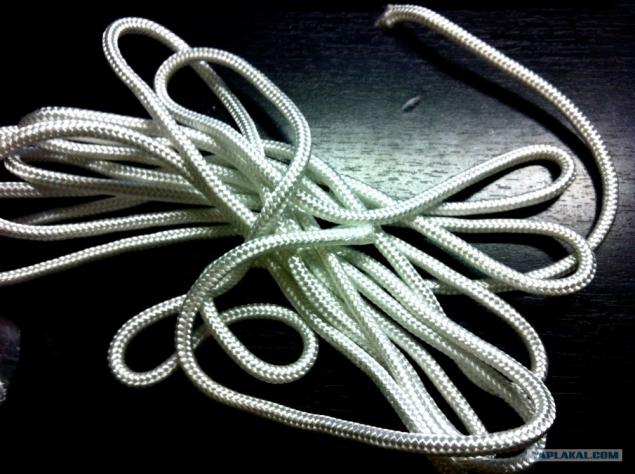
It was then decided to twist similar to the original pigtail of modern 2x0, 25 copper audio cable.
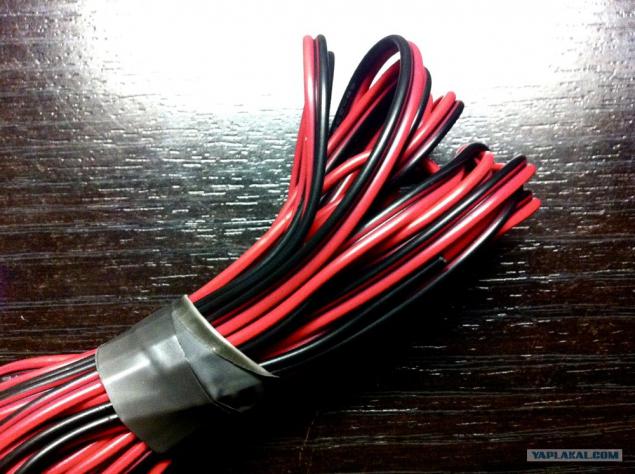
On the one hand - stereo 3, 5 jack, the other - the terminals.
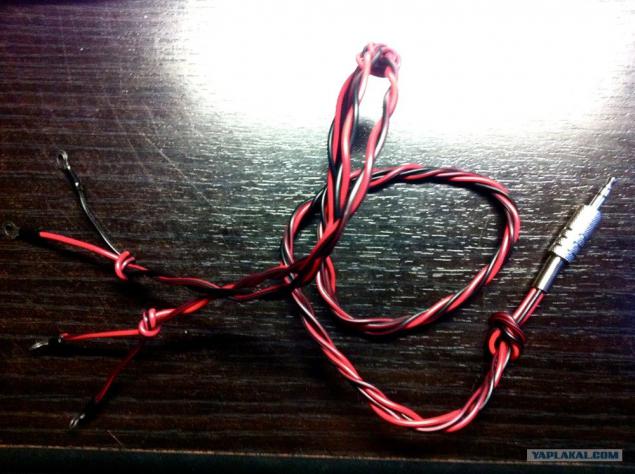
At the same time out of the box were recovered little modern radiators, they have been soldered new wires to the appropriate terminals.
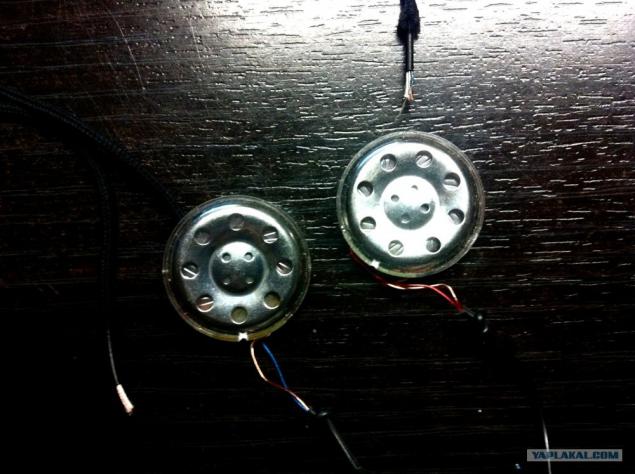
It was decided not to split hairs with fastening, because there is a great chance of their temporary residence in a vintage shell. And it did not want to spoil.
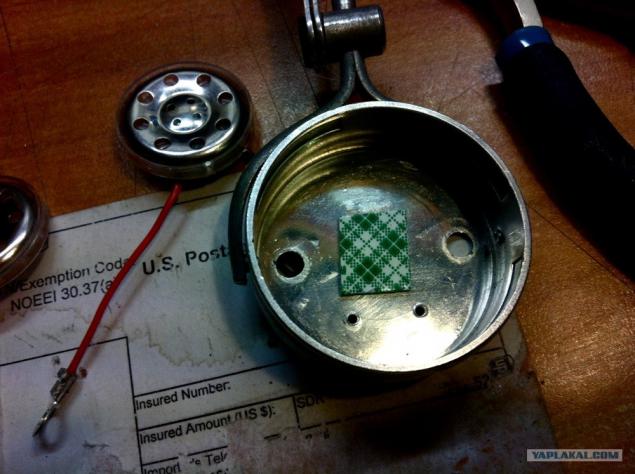
Two
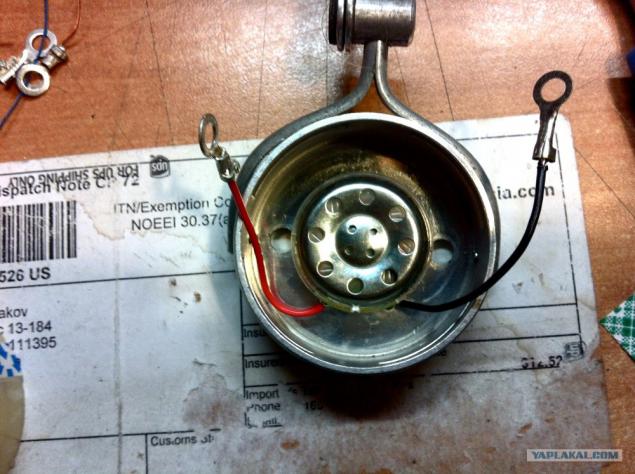
Three

Result:

Two
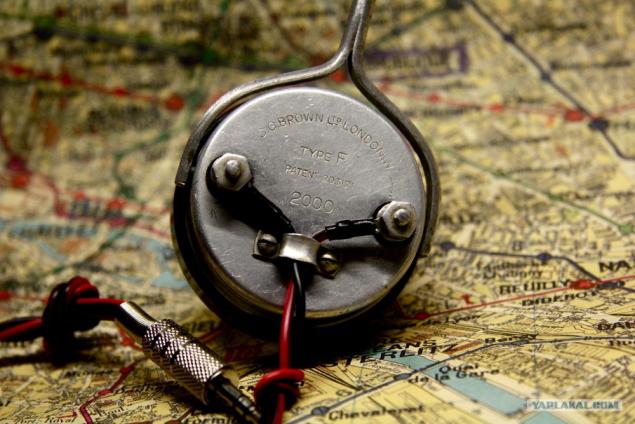
(Logo BBC)
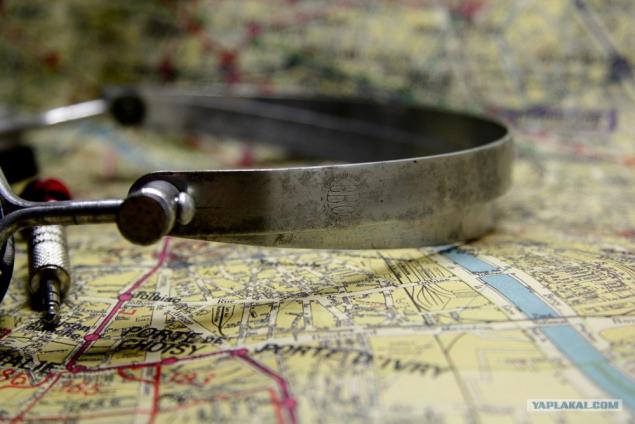
Two
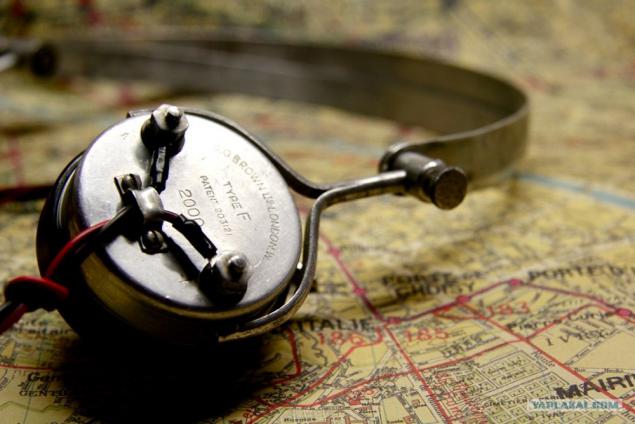
Three
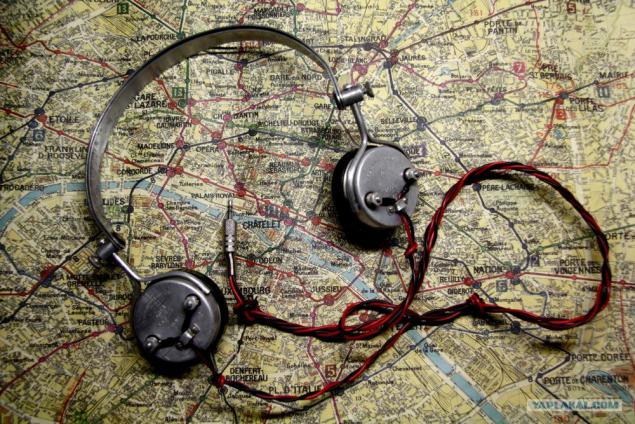
Headphones were surprisingly comfortable. The upper bow is divided into two and headphones can sit tight on the head. Adjustable everything that is possible, height, angle, tilt emitters.
Temporary costs - two nights.
Cash costs - twenty-eight pounds over his ears and a few dozen rubles for audio and the right kind of jack. Everything else was available.
Plan for the future - pick ambushurki and test the original filling with modern poratitvnymi amplifiers.

Source:
The story of how the device with ninety found application in the history of two thousand twelfth year.
It all started with an inexpensive audio. Around two years ago, I wanted to try the small overhead headphones, purely out of curiosity, how it will sit on his head. I think that's like that.

The sound of them was pretty clean, just frustrating lack bass. Unsuccessful design appeared in a couple of weeks in a bag thin plastic bow broke in half. Repair tape proved unreliable, so a box with all the junk went emitters, and the rest went to travel to the landfill.

And about a month ago, after months of exploring the ebeyu, losing in one auction and win in the other, in the direction of Moscow headed by Royal Mail box with the contents of «VINTAGE SG BROWN TYPE F 2000ohms 1920's HEADPHONES HEAD PHONES CRYSTAL RADIO»

On Friday, a box arrived in Moscow.

«S.G.Brown
Type F
Patent 203121
2000 »
It is this inscription met me at the emitters.

This patent was issued in 1923 and describes the shape of the magnet used in the radiator. Headphones, according to the Internet were quite popular and similar models produced up to 60s.
But it turned out to be on hand model released in the first years after the grant of the patent. Then change the design.
Headphones, which is logical for your time and have a mono jack British radio sets of the century. The plug is also made in England, UK.

Cable - one of the most delightful that just had to meet. He really cloth, inside a thin copper wire braided around the yarn. For jack and headphone wire is fixed mechanically, without any soldering.
SGBrown Type F 1920s headphones (Headphones 1920 SGBrown Type F)

The first step was the restoration and modification analysis and cleaning. Throughout its history, the headphones had time to acquire a layer of dirt and scratches.

Internal structure of the unit incredibly easy. On it is possible to explain the principle of operation of audio equipment.
The metal diaphragm.

And magnets. Everything is available, one has only to unscrew the cap.

Before removing the stuffing, it was decided to still check it. The sound is what it should be coming out of each radiator. I would not say about a lot of its quality, but the noise was just rattling aperture in one of the ears, the rest of the sound is good. Nominal impedance of the ear - 2K Ohm, which may be good for the British radio sets, but almost beyond the power of modern players without an amplifier. A booster for me, alas, only one car, and it is powered from the old computer power supply. Such a construction is problematic to carry.

Everything is not fixed inside the headphones, except on the bolts, which are also holders for terminal wires suitable outside. At any time, any part of the structure can be repaired or replaced.

Turn Vintage cloth wire mono to stereo without cutting was impossible, and given its structure, there was a big chance that he will lose all the charm in the process. My first thought was to push the wires in the cord and make some semblance of the original, but the result was a thick and ugly.

It was then decided to twist similar to the original pigtail of modern 2x0, 25 copper audio cable.

On the one hand - stereo 3, 5 jack, the other - the terminals.

At the same time out of the box were recovered little modern radiators, they have been soldered new wires to the appropriate terminals.

It was decided not to split hairs with fastening, because there is a great chance of their temporary residence in a vintage shell. And it did not want to spoil.

Two

Three

Result:

Two

(Logo BBC)

Two

Three

Headphones were surprisingly comfortable. The upper bow is divided into two and headphones can sit tight on the head. Adjustable everything that is possible, height, angle, tilt emitters.
Temporary costs - two nights.
Cash costs - twenty-eight pounds over his ears and a few dozen rubles for audio and the right kind of jack. Everything else was available.
Plan for the future - pick ambushurki and test the original filling with modern poratitvnymi amplifiers.

Source:
